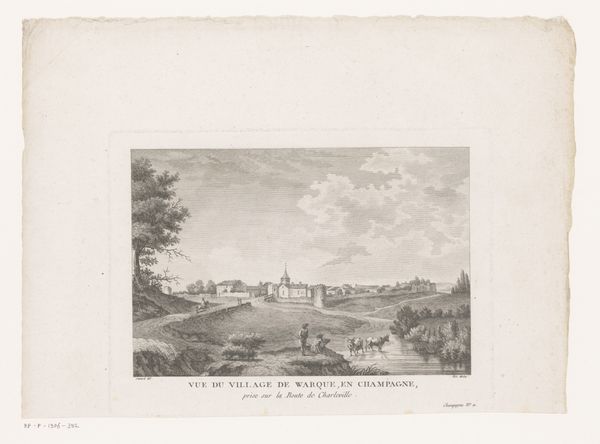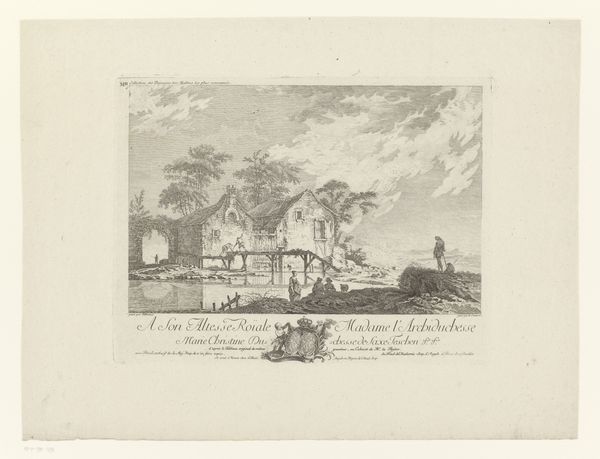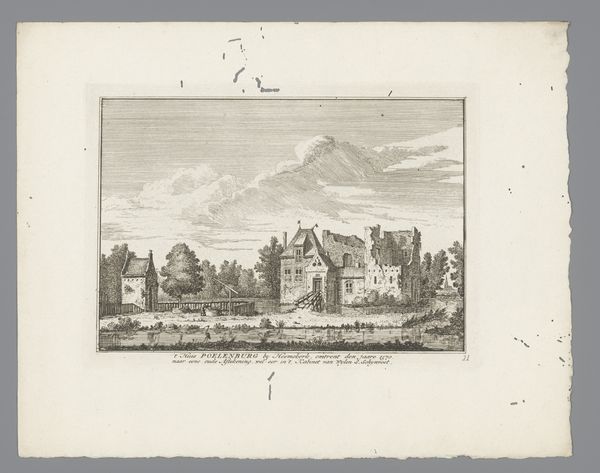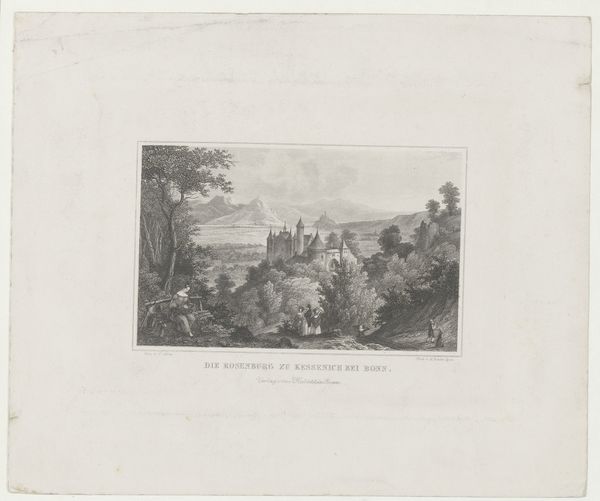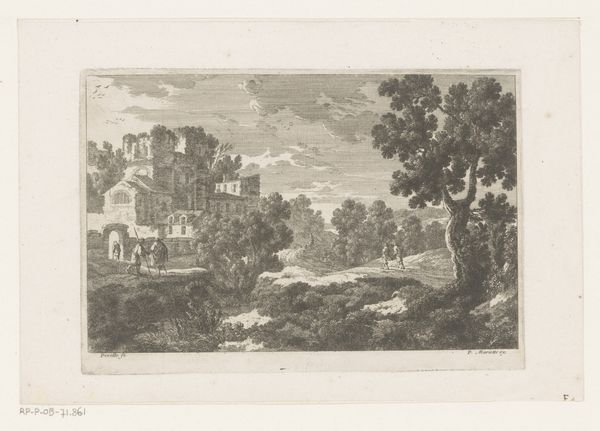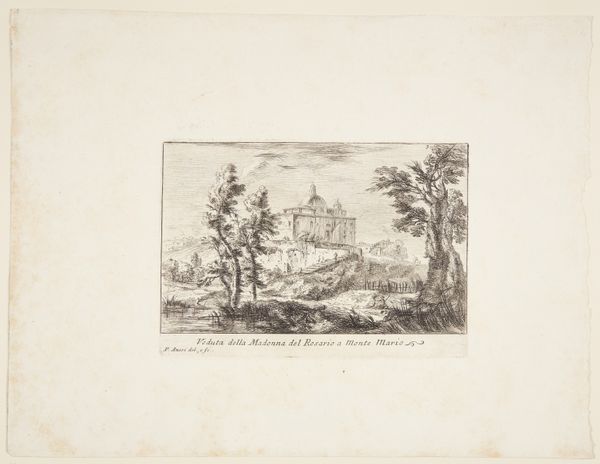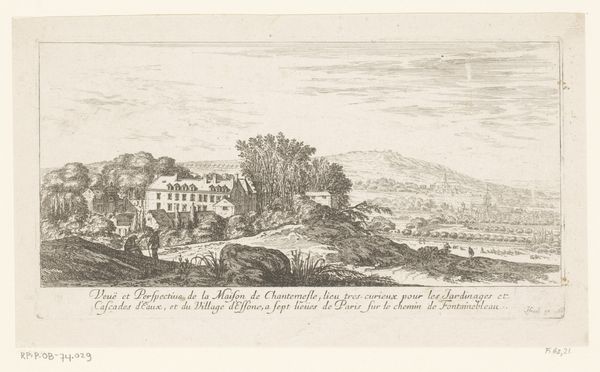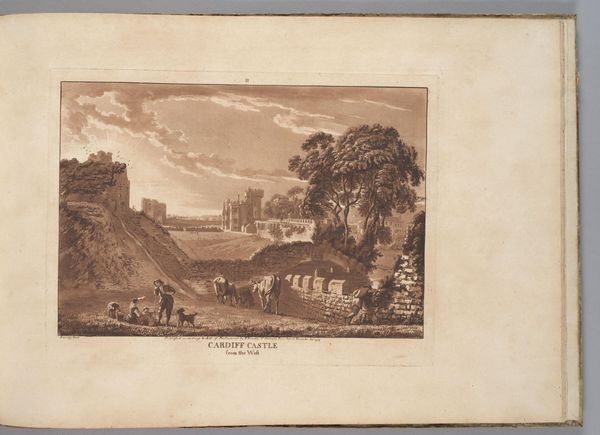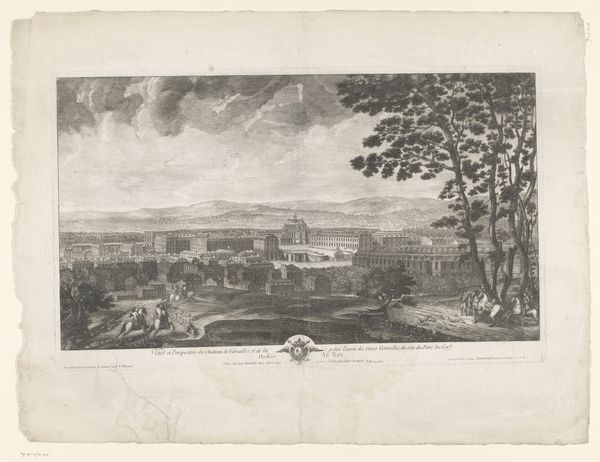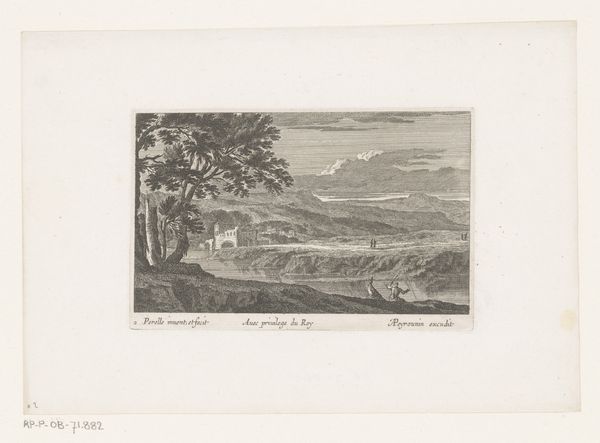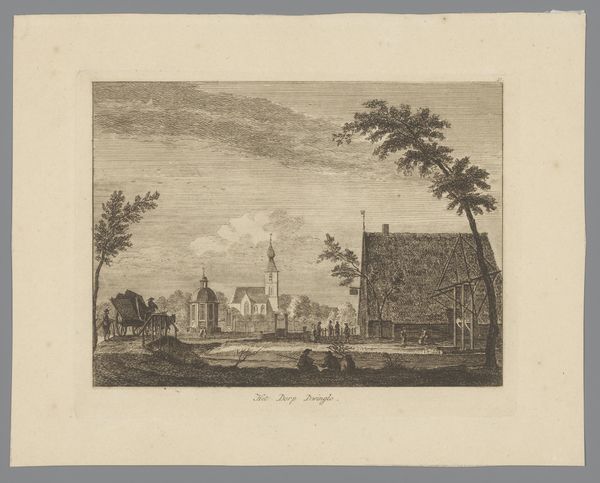
drawing, print, paper, engraving
#
drawing
#
aged paper
# print
#
old engraving style
#
landscape
#
paper
#
romanticism
#
mountain
#
engraving
Dimensions: height 188 mm, width 238 mm
Copyright: Rijks Museum: Open Domain
Jakob Wilhelm Christian Roux made this print of the Haardtgebergte using etching. This landscape creates meaning through its visual codes, cultural references, and historical associations. Produced in the early 19th century, likely in Germany, this scene presents a rural idyll, a vision of harmonious life and labor. The rising smoke hints at human activity and the presence of industry, however the figures working the field are central to the composition. The geography of the Haardtgebergte, with its rolling hills and fertile land, would have influenced the choice of subject matter. Prints such as this would have circulated among a growing middle class, fostering a sense of regional or national identity. The imagery comments on the social structure of its time, idealizing rural life. To understand this artwork better, we can delve into archival records, exploring travelogues, local histories, and economic data from the early 19th century. Art’s meaning is contingent on its social and institutional context.
Comments
No comments
Be the first to comment and join the conversation on the ultimate creative platform.
